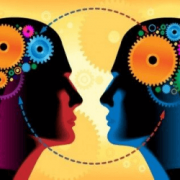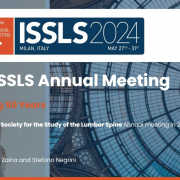Let’s find out who is Giacomo Rizzolatti, the one who holds the Presidential Lecture at the next ISLLS conference.
“In every action, beyond what you do, the intention counts; the reason you do it— I take the glass—is the action. How I take it is crucial to understanding the intention. Whether to drink, to toast, or to throw it against my interlocutor”: These words are by Prof. Giacomo Rizzolatti, discoverer of mirror neurons and one of the leading figures in the field of neuroscience.
Prof. Rizzolatti, one of the greatest Italian neuroscientists, will speak for a keynote lecture at the 50th ISSLS conference taking place from May 27 to May 31 in Milan, the city of the ISICO headquarters. We remind you that Dr. Fabio Zaina, an ISICO physiatrist, and our scientific director, Prof. Stefano Negrini, will be local hosts for the event.
A short premise before we go into it. Following the discovery of Rizzolatti between the 1980s and 1990s, Professor Vilayanur Subramanian Ramachandran, an Indian neuroscientist who later developed the “Mirror Therapy”, said: “I predict that mirror neurons will do for psychology what DNA did for biology,”
Rizzolatti’s discovery of mirror neurons had an enormous impact on present thinking, on brain-mind relations, and on “naturalising” cognitive functions. (description of the neurophysiological mechanisms underlying the actions, intentions, and emotions of others).
About Prof. Rizzolatti
Born in Kyiv in 1937, after graduating with a degree in medicine and surgery from the University of Padua, Rizzolatti has devoted his career to the study of the brain and the neural mechanisms underlying human behaviour.
During his career, Rizzolatti has worked at several prestigious academic institutions, including the University of Parma, where he currently holds the role of Professor Emeritus of Neuroscience.
Rizzolatti is a member of the National Academy of Lincei, the American Academy of Arts and Sciences, the Académie des Sciences, the Institut de France, and an honorary member of the Italian Society of Neurosciences. He has also received numerous international awards and recognitions, such as the Giuseppe Occhialini International Award in 2011 and the election as a Foreign Member of the Royal Society, the most prestigious scientific academy in the UK, since 2021.
About mirror neurons
It was thanks to observing the behaviour of some monkeys and how their brains worked that the team of researchers led by Prof. Rizzolatti discovered a particular type of neurons that were named “mirror neurons”.
“Mirror neurons are a class of neurons that modulate their activity both when an individual executes a specific motor act and when they observe the same or similar act performed by another individual...” (ref. Understanding motor events: a neurophysiological study).
According to the published study, What We Know Currently about Mirror Neurons “The discovery of mirror neurons was exciting because it has led to a new way of thinking about how we generate our own actions and how we monitor and interpret the actions of others. This discovery prompted the notion that, from a functional viewpoint, action execution and observation are closely related processes, and indeed that our ability to interpret the actions of others requires the involvement of our own motor system.”
So let’s say that neurons can reflect just like a mirror. What? Emotions, for example, by activating the ability to empathise with and understand the emotions of others.
When I observe the gestures or facial expressions of my interlocutor, these neurons are activated, affecting my ability to understand and respond to other people’s emotions. The possible implications in the field of psychology, for example, are then natural.
And in the field of medicine? Mirror neurons have different applications, also because recent studies in several species, from birds to humans, suggest that the ‘mirror mechanism’ is more intricate and adaptable than previously believed, extending beyond traditional mirror neurons to encompass a broader network of neural components.
“It’s obvious and incredible the application they can have in the field of motor rehabilitation, for example, following a stroke, an orthopaedic trauma, or a brain injury. The activation of mirror neurons not only in execution but also in simple observation, somewhat like, as if that movement was actually being done, is useful for promoting the recovery of compromised motor functions, explains Prof. Negrini.
Think of “Action Observation Therapy,” a treatment that promotes observing and imagining an action before performing it so as to speed up and improve motor recovery processes.
Or think of “Mirror Therapy”: the physiotherapist usually uses mirrors or special boxes placed in front of the patient, which, for a few years, are going to be replaced by digital technology.”
Through the use of virtual reality technology, patients can be immersed in environments where they observe themselves performing movements, thereby stimulating the activation of mirror neurons. “An incredible and innovative approach that can improve motor relearning and facilitate functional recovery in individuals undergoing rehabilitation,” concludes Prof. Negrini



